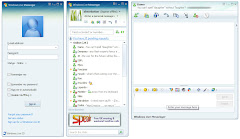Villa de San Antonio del Camino was the original name of the City of Merlo. It was founded by Francisco de Merlo y Barbosa. He was born in Sevilla, Spain, in 1693 and died in Buenos Aires, in 1758. He served as a notary public in the Cabildo (town hall) of Buenos Aires and he started acquiring lands in the western countryside in the area called at that time Pago de las Conchas. It was surrounded by the rivers De las Conchas (now Reconquista) and Luxan (now Luján).
By 1727 Merlo had bought a large number of ranches, and his estate extended along the cities now known as Merlo, Libertad, Pontevedra, San Antonio de Padua, Mariano Acosta, Ituzaingó, Castelar, Villa Ariza, Villa General Zapiola, Moreno, Rafael Castilo, Isidro Casanova, González Catán, important sections of Morón and an ample portion of Partido de la Matanza.
According to the Spanish laws, the lands belonged to Francisco de Merlo, however, the territory was inhabited by indigenous tribes called Querandíes and Araucanos, whose recurrent raids led Merlo to build a small hamlet around his ranch as a refuge for many families. Don Francisco also erected a private chapel in the place, near the “Royal Road”, a road that linked Buenos Aires with Lima, the capital of the Viceroyalty of Perú. The chapel was consecrated to Nuestra Señora del Camino and to San Antonio de Padua. In 1742 fifteen families resided in the village.
After several unsuccessful attempts, Merlo wrote a letter to the King Felipe V of Spain in order to request permission for the legal foundation of the town. On August 7th, 1755 the authorization to found the town was conceded. Twenty days later -August 28th- the prosperous village received the name of Villa de San Antonio del Camino. Don Francisco de Merlo y Barbosa died on April 4th, 1778. His vaste estate was divided among his descendants (twelve children) and the Mercedarian Order.
In 1859, the architect Pedro Benoit was assigned to rebuild the church and to draw the map of the town including the thirteen squares that belonged to the church and eighty seven squares else donated by Manuela Calderón, widow of Pearson, and by her son Juan Dillon, who were the landowners of the lands in those days. Dillon was Jhon Dillon´s son, first husband of
Manuela. Juan Dillon is considered as the second founder of the village, he encouraged its development and he was its first mayor. In Dillon´s days the town started to be called Merlo. Benoit traced the basic structure of the city, which is known nowadays as the City of Merlo, and that once was named Villa de San Antonio del Camino.

- Rotary Club, San Antonio de Padua´s site, 2005. www.paduaweb.com.ar/historia
- Schreiber, César, “Contribución al Conocimiento de la Naturaleza y el Hombre de la Región-Moreno- Provincia de Buenos Aires”, 1995. www.moreno.gov.ar/partidodemoreno/historiademoreno4aspx
- Portal Oficial de la Provincia de Buenos Aires, 2009. www.gob.gba.gov.ar/cdi/









